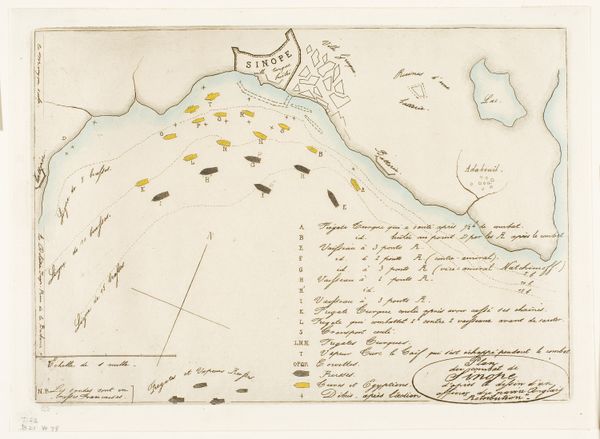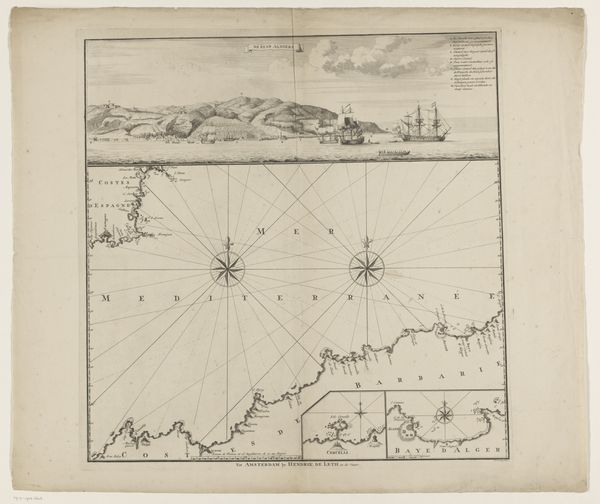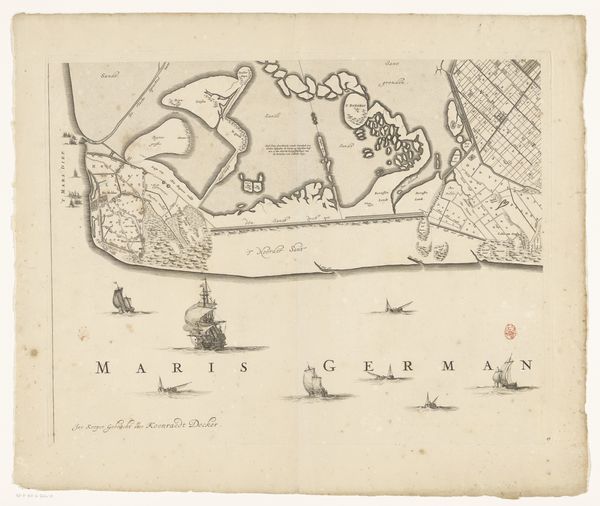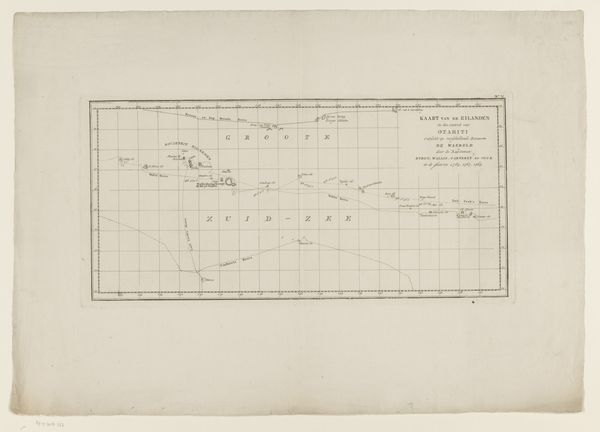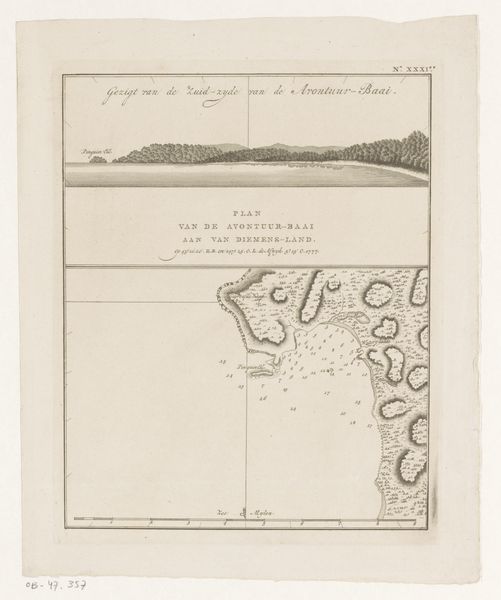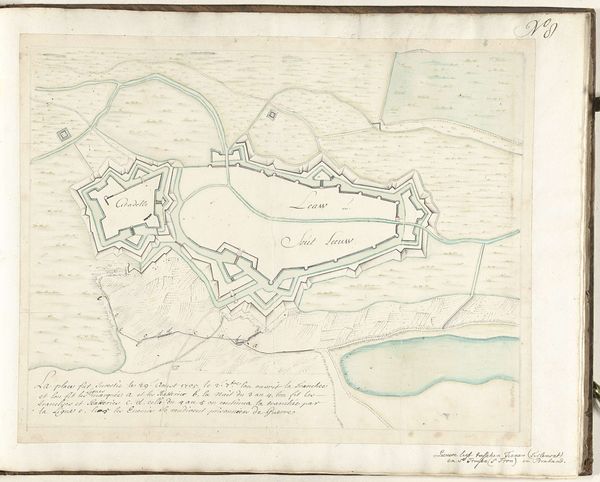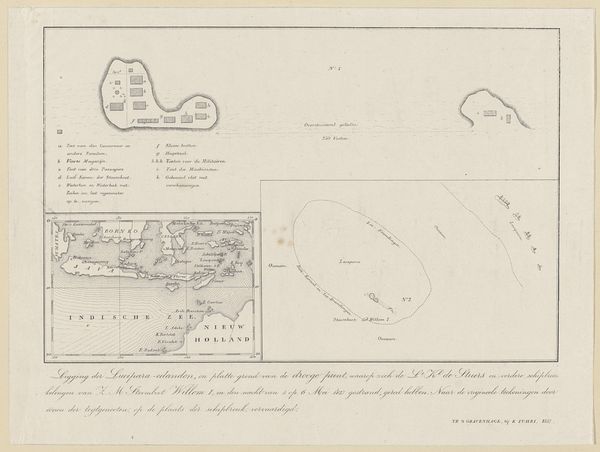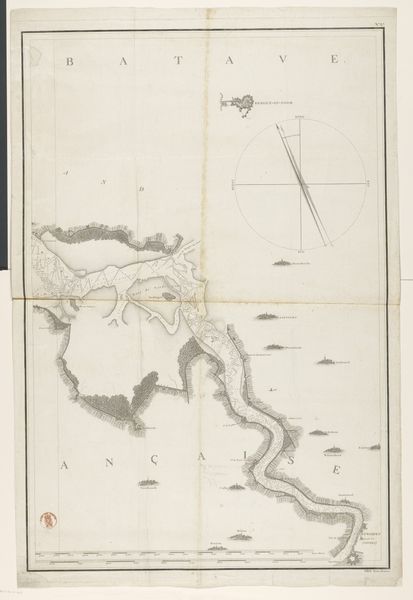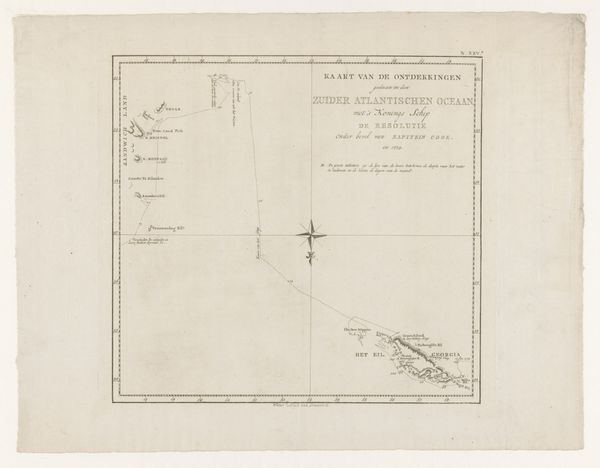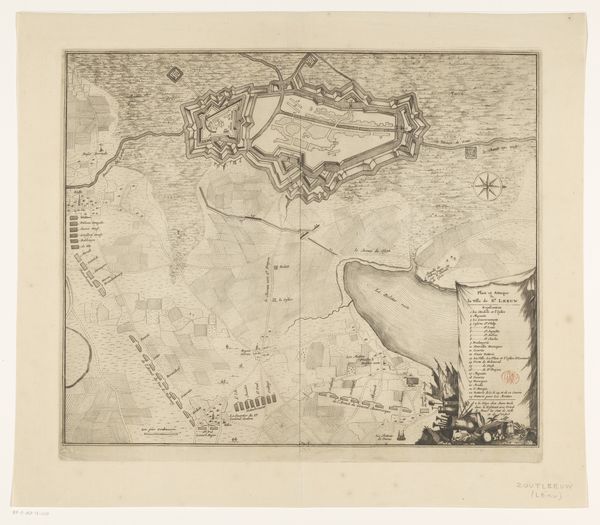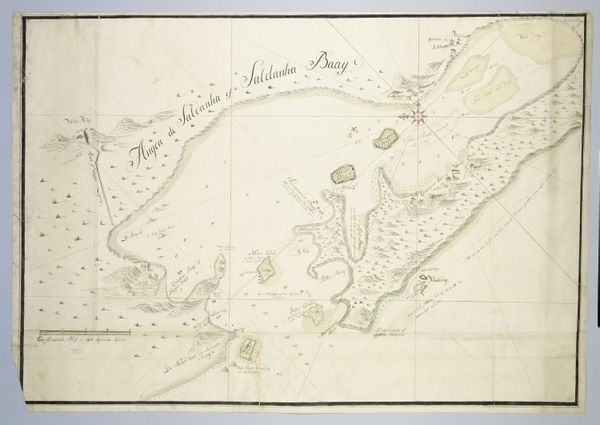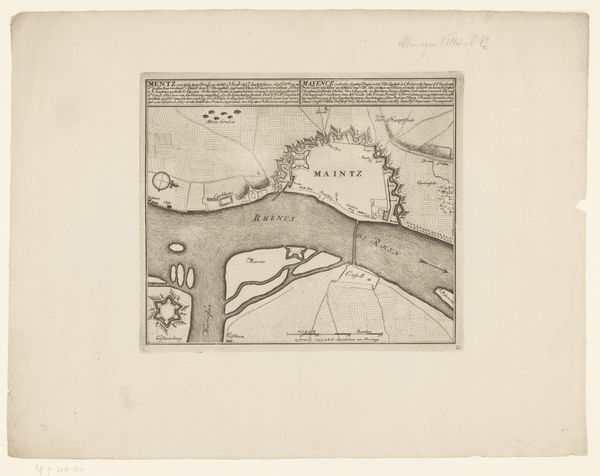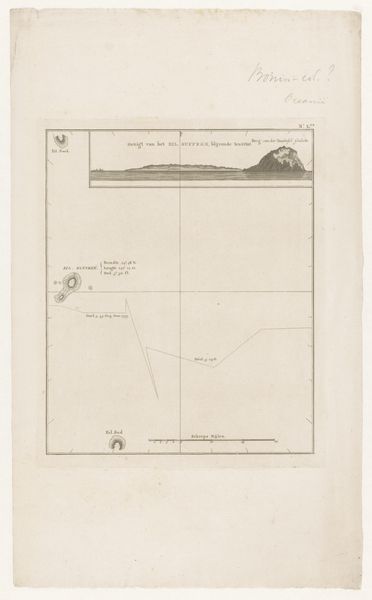
Plan du Combat de Sinope (Plan of the Battle of Sinope) 1853
0:00
0:00
drawing, print, etching, ink
#
drawing
#
ink drawing
#
ink painting
# print
#
etching
#
etching
#
ink
#
cityscape
#
history-painting
Dimensions: plate: 7 3/16 x 10 1/4 in. (18.3 x 26 cm)
Copyright: Public Domain
Curator: Look at this incredibly detailed etching, "Plan du Combat de Sinope," or "Plan of the Battle of Sinope" created by Charles Meryon in 1853. Editor: My first thought is—how chillingly serene it is. It's a map depicting naval carnage, but rendered with this delicate, almost ghostly precision. There's a peculiar detachment. Curator: That detachment is deliberate. Meryon wasn't necessarily aiming to glorify or demonize war, but to document and dissect its mechanics. The artwork's rigid structure mimics cartography and brings clarity to naval conflicts with ink. The use of meticulously etched lines communicates spatial relationships and historical context. Editor: Absolutely. It is a beautiful example of structural precision in an intaglio print! He renders warships into simple black icons, arranged like pieces on a chessboard in this inky pool. But what about the town—the “Sinope” meticulously inscribed in crisp Roman letters atop the island? One begins to wonder how the citizens might have felt as each vessel floated towards their destiny. What a peculiar blend of morbid planning with somber regard. Curator: It's the intersection of precise planning and brutal reality. Each stroke seems intended to not just render space but preserve it as a historical record. Notice how the shading gives dimension to what would otherwise be a flat composition. It's an almost academic approach to something inherently chaotic. Editor: Yes, there is a haunting contrast between the technical rendering and the subject’s inherent drama. War presented like a scientific diagram, bloodlessness masking deep violence. The more one looks the stranger and more discomforting this work becomes. What would Meryon, perhaps from some future vantage, make of what we’re doing here now? Curator: An astute observation. I appreciate how closely you explored Meryon's treatment and tone, and how it made you confront deeper perspectives through the surface of war!
Comments
No comments
Be the first to comment and join the conversation on the ultimate creative platform.
